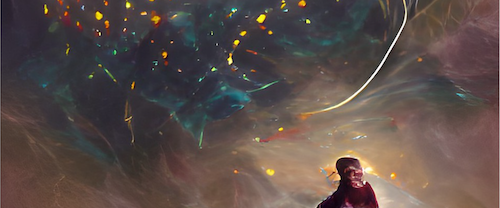We study the properties of the six optically dark galaxies detected in the GOODS-ALMA survey. While none of them are listed in CANDELS catalog down to H = 28.16 AB, we were able to de-blend two of them from their bright neighbor and measure an H-band flux. We present the spectroscopic scan follow-up of five of the six sources with ALMA. We show that nearly 70% of them belong to the same...
We present a cosmological zoom-in simulation of two 5x10^12 halos and a Mpc-long cosmic filament connecting them at z∼2, to study the evolution of the IGM and the cosmic web around this system at unprecedented resolution. At 5>z>3, the halos lie in a cosmic sheet with multiple coplanar filaments which contain most of the halos. The collapse of the sheet at z∼5 generates a strong shock that...
Our goal is to recover the linear peculiar velocity and density field from observations of galaxy peculiar velocities, specifically the Cosmicflows3 catalog. Our efforts are focused on attempting to recover the posterior probability function of the peculiar velocity field according to the ΛCDM model. By assuming the priors of the Λ CDM model we use a Hamiltonian Monte Carlo technique to sample...
Why do thin galactic discs survive in the concordance model? This question has long been set aside as an obvious consequence of angular momentum conservation. The true answer is more subtle and enlightening for astronomy and theoretical physics. It must involve capturing gravity-driven processes operating on multiple scales, working to spontaneously set up a remarkably robust level of...
Like their lower redshift counterparts, high-redshift clusters host an excess of massive quiescent galaxies. In this talk will explore where these galaxies were quenched. I will present a study of protocluster galaxies that reside in the distant outskirts of 15 galaxy clusters at 0.8≤z≤1.5. I will show that the massive protocluster galaxies are already quenched to a similar level as the...
MOONS is the new Multi-Object Optical and Near-infrared Spectrograph under construction for the VLT. This remarkable instrument will allow large-scale spectroscopic campaigns needed to study the formation and evolution of stars and galaxies over the entire history of the Universe. I will present the current planning for Galactic and Extragalactic large survey foreseen for MOONS. On a...
I introduce our studies of the richest galaxy clusters in rich superclusters in the local Universe, in the Corona Borealis supercluster and in the A2142 supercluster, and galaxy transformations in them. The richest clusters in these superclusters are surrounded by the regions of influence with characteristic density contrast $\Delta\rho \approx 30$. The regions of influence passed...

